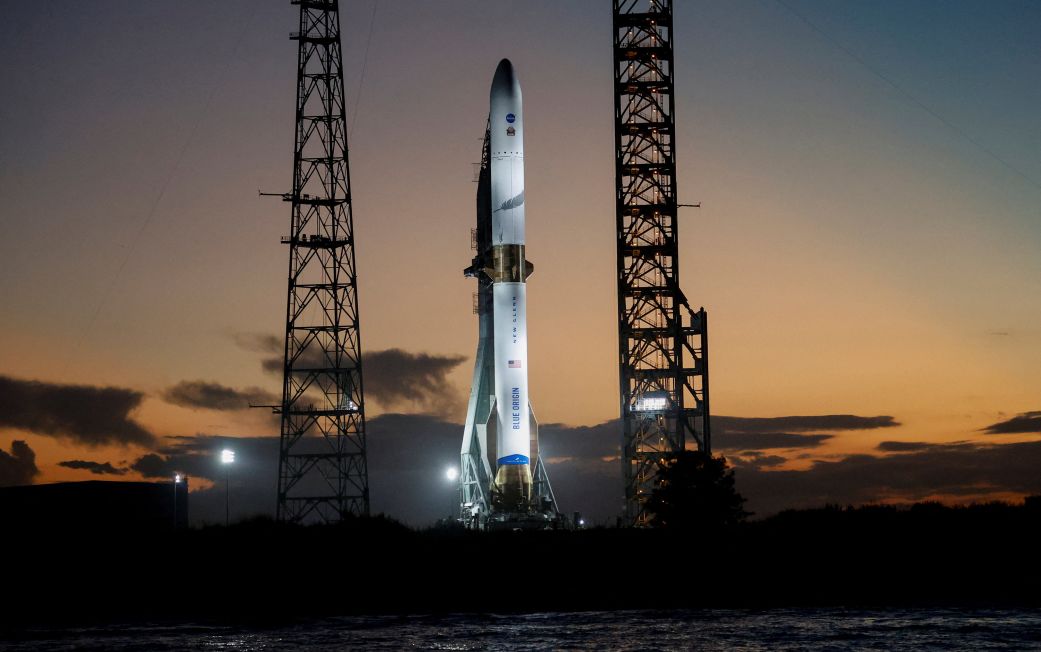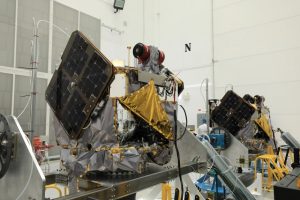New Glenn’s Second Launch to Mars Marks Critical Test for Blue Origin
Jeff Bezos’ Blue Origin is preparing for the second-ever launch of its New Glenn rocket, this time carrying NASA’s Escapade mission on a journey to Mars. The 322-foot orbital vehicle represents Blue Origin’s ambitious challenge to SpaceX’s dominance in the commercial launch sector.
Key Takeaways
- New Glenn’s second launch carries NASA’s Escapade Mars mission
- Blue Origin will attempt to recover the first-stage booster
- Launch window opens Sunday at 2:45 p.m. ET from Cape Canaveral
- Mission faces potential weather challenges with 35-45% unfavorable conditions
Launch Details and Weather Concerns
The towering rocket is scheduled to lift off from Cape Canaveral Space Force Station during an 88-minute window opening at 2:45 p.m. ET on Sunday. Blue Origin will provide a livestream of the event, though weather remains a concern with forecasters predicting a 35% to 45% chance of unfavorable conditions.
If delayed, backup launch opportunities are available on Sunday and Monday. Laura Maginnis, New Glenn’s vice president of mission management, emphasized coordination with FAA and NASA partners during a recent news conference, stating they’re “working really closely… to ensure that we’re honoring and respecting the airspace expectations.”
Booster Recovery: A Critical Business Goal
Blue Origin will attempt to land and recover New Glenn’s first-stage booster on the seafaring barge Jacklyn, mirroring SpaceX’s cost-saving reuse strategy. This follows January’s inaugural flight where booster recovery failed due to engine reignition issues, though the primary satellite deployment mission succeeded.
Maginnis explained the nearly 10-month gap between launches resulted from extensive analysis and modifications to the propellant management system and hardware to improve landing chances. However, she noted that while booster recovery is crucial for their business model, “if we don’t land the booster — that’s OK. We have several more vehicles in production.”
NASA’s Escapade Mars Mission
The primary payload consists of twin Escapade (Escape and Plasma Acceleration Dynamics Explorers) spacecraft that will embark on a long journey to Mars. The orbiters will enter a holding pattern before proceeding to the red planet next year when orbital alignment allows for more efficient travel.
This low-cost planetary science mission, led by UC Berkeley with commercial partners Advanced Space and Rocket Lab, aims to reach Martian orbit by 2027. Once positioned, the twin satellites will investigate Mars’ atmospheric loss over billions of years and study space weather effects that could impact future human exploration.
Principal investigator Robert Lillis of UC Berkeley’s Space Sciences Laboratory explained: “We will be making the space weather measurements we need to understand the system well enough to forecast solar storms whose radiation could harm astronauts on the surface of Mars or in orbit.”
Looking ahead, Blue Origin’s next New Glenn flight, though without a confirmed date, is expected to carry the company’s Mark 1 lunar lander to the Moon’s surface, marking another significant milestone in the company’s space exploration ambitions.






